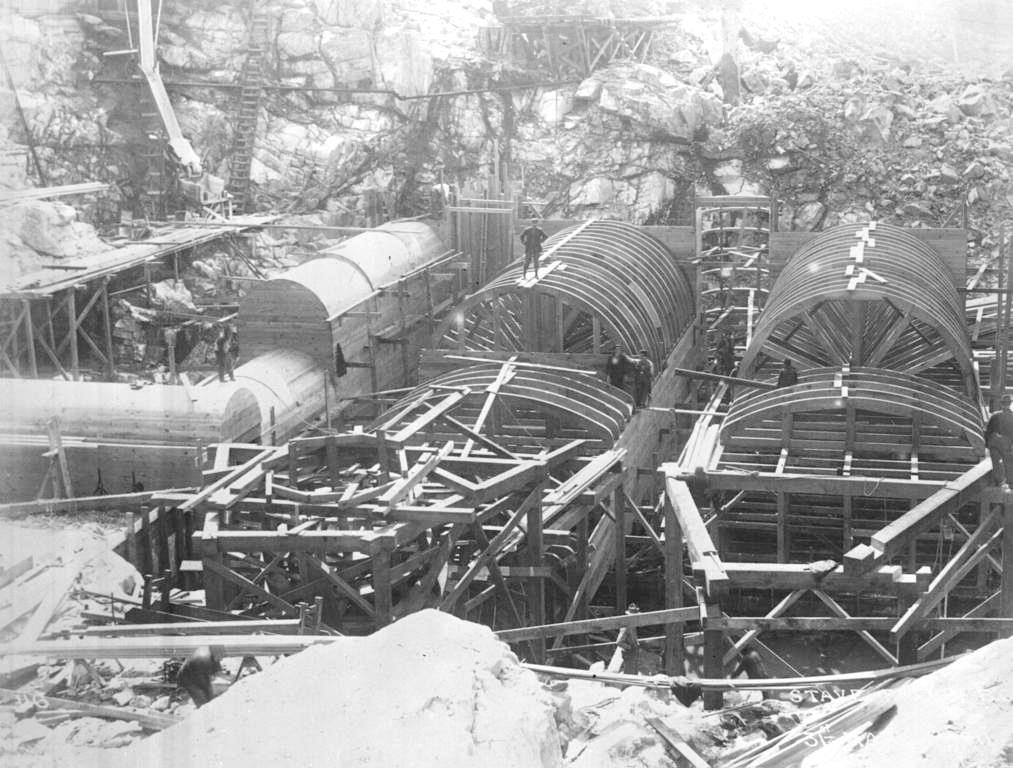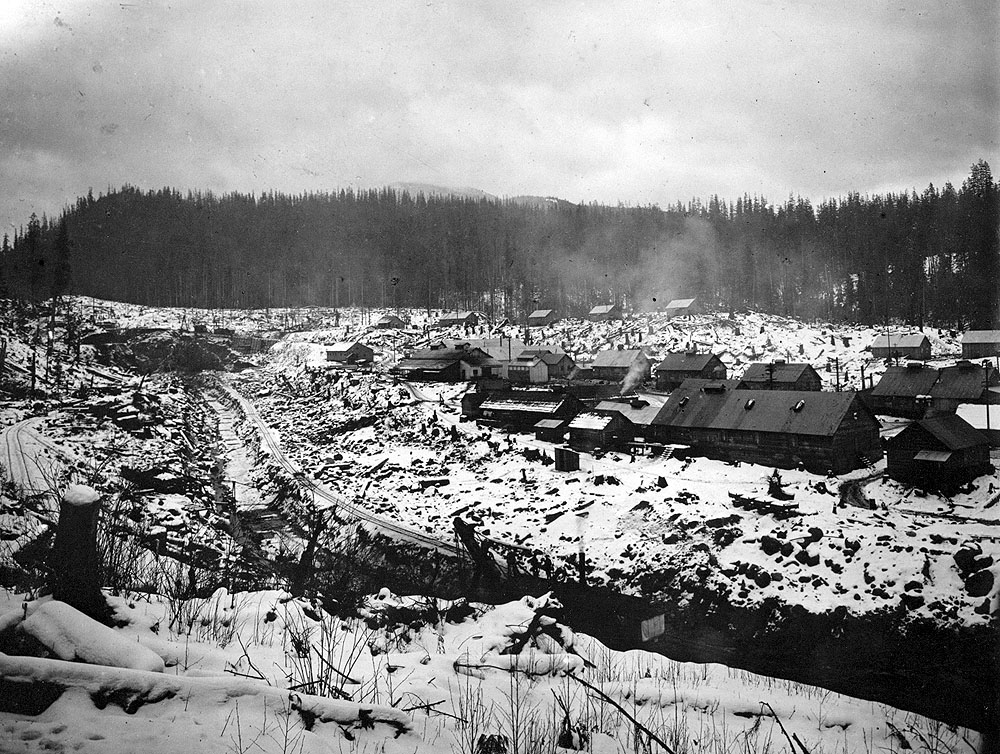![Stave Lake Dam during construction. Western Canada Power Co image. CA Mattice appears to be the photographer hired by the company to document the work. 1912. [P07893]](http://mapleridgemuseum.org/wp-content/uploads/2020/02/P07893.jpg)
Before 1908, the Stave River flowed over a large waterfall 55 kilometers east of Vancouver and 8 kilometers above its mouth on the Fraser. While much admired for its potential, the stumbling block was the means to move many tons of concrete to the site.
Between 1908 and 1912, the Western Canada Power Company constructed one of Canada’s shortest railways from Ruskin to the Stave Falls in order to carry materials and labour for the construction of a dam and hydroelectric power station there. The chief engineer and general manager for the project was Mr. R. F. Hayward, while Mr. R. A. MacKenzie served as resident engineer. This was the first project in what became the Alouette-Stave hydroelectric complex, a network of sluices, dams, and generators to produce electricity in the Alouette and Stave River valleys.

John R. Freemen, a consulting engineer, reported on the development of the dam’s construction. He noted that he was “very favorably impressed by the excellent character of the construction work found in progress July 19-20, 1911. I found the designs very carefully and conservatively worked out, so as to give a structure of an imperishable character, in which the hazards of flood, fire and decay were reduced to their lowest terms.” This first phase of development included the construction of an intake structure, dam, spillway and a powerhouse containing two generators. Generating equipment for the dam was built in Zurich. The process of making the dam began with “the biggest dynamite blast in Canada” to break up the rock walls.
When complete, the dam provided power for the north side of the Fraser River over transmission lines run down Dewdney Trunk Road into Burnaby. The powerhouse, turbines and generators were state-of-the-art for their time. A third generator was added to the Stave Dam in 1916.

The company provided a group of houses for workers in the area below the dam. Applications for houses could be made only to the General Manager and no one else. The company town was subject to regulations, which, in addition to guaranteeing furnished houses to powerhouse employees, linemen, and to certain employees in charge of the company railway, dictated the furniture to be provided and the rent to be paid. Houses included kitchen range and boiler, blinds, tables, chairs, bureaus, bedsteads and mattresses; the monthly rental was $20.00.
By 1920, the Western Canada Power Company was taken over by B.C. Electric (now BC Hydro), and all further construction and renovation was done by the new company. In 1922, expansion of the dam began, which started with the construction of the Blind Slough dam. This included raising the dam structure, the Blind Slough spillway, and two more generators. Expansion was completed by January 31, 1924.
After a new powerhouse was constructed in 2000, BC Hydro debated whether the 1912 building would continue operating. It was decided to operate the original Stave Falls dam and powerhouse as a tourist attraction. BC Hydro officially reopened the original 1912 powerhouse as the Stave Falls Visitor Centre in May of 2002.